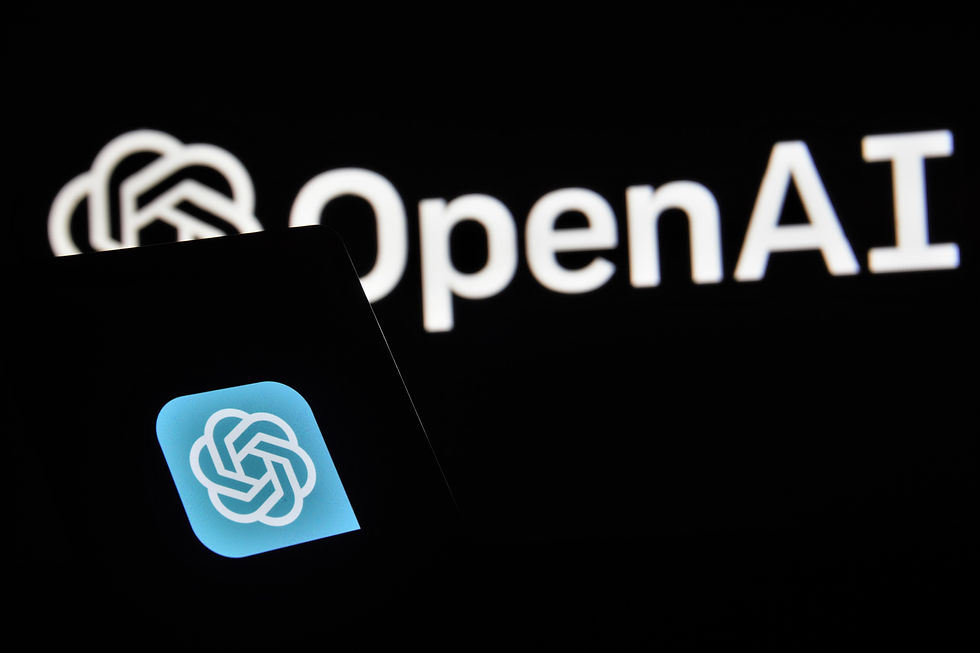How AI is Revolutionizing Climate Change Management: Real-Life Examples
- Let's Live A Life

- Nov 15, 2023
- 5 min read
Climate change is one of the most pressing challenges of our time, affecting every aspect of our lives and the future of our planet. To tackle this global crisis, we need to use all the tools and technologies at our disposal, including artificial intelligence (AI).
AI is a branch of computer science that aims to create machines and systems that can perform tasks that normally require human intelligence, such as learning, reasoning, decision making and problem solving. AI can help us combat climate change by enhancing our understanding of its causes and effects, optimizing our use of natural resources, reducing greenhouse gas emissions, and supporting adaptation and resilience.
In this article, we will explore some examples of how AI is being used to manage climate change in different domains, such as weather forecasting, energy production, carbon removal, disaster prevention and response, agriculture and food security, and education and awareness.
How AI is Revolutionizing Climate Change Management: Real-Life Examples
Read more on Artificial Intelligence

Weather forecasting
One of the key challenges of climate change is to predict its impacts on weather patterns, such as temperature, precipitation, wind, storms and droughts. These impacts can have serious consequences for human health, food production, water availability, infrastructure and ecosystems.
AI can help us improve our weather forecasting capabilities by processing large amounts of data from various sources, such as satellites, sensors, models and historical records, and extracting useful information and insights. AI can also help us improve our climate models, which are complex mathematical representations of the physical processes that govern the Earth's climate system.
For example, the UN-led AI Advisory Body supports a project that uses AI to investigate past environmental change around displacement hotspots in Burundi, Chad and Sudan, and deliver future projections to inform adaptation measures and anticipatory action for humanitarian programming. Another example is the MyAnga app , which helps Kenyan pastoralists brace for drought by sending them data from global meteorological stations and satellites to their mobile phones.
Read more on Artificial Intelligence

Energy production
Another key challenge of climate change is to reduce our dependence on fossil fuels, which are the main source of greenhouse gas emissions that cause global warming. We need to transition to cleaner and more efficient sources of energy, such as solar, wind, hydro and nuclear power.
AI can help us optimize our energy production and consumption by monitoring and controlling energy systems, improving energy efficiency and demand response, integrating renewable energy sources into the grid, and designing new low-carbon materials and technologies.
For example, Google uses AI to reduce the energy consumption of its data centers by up to 40% , by using deep neural networks to predict power usage and optimize cooling systems. Another example is DeepMind's collaboration with National Grid UK , which aims to use AI to balance electricity supply and demand in real time and increase the use of wind power.

Carbon removal
Another key challenge of climate change is to remove the excess carbon dioxide (CO2) that has already accumulated in the atmosphere due to human activities. CO2 is a greenhouse gas that traps heat and contributes to global warming. We need to find ways to capture and store CO2 or convert it into useful products.
AI can help us enhance our carbon removal capabilities by detecting and measuring CO2 sources and sinks, optimizing carbon capture and storage (CCS) processes, designing new carbon utilization technologies, and verifying and monitoring carbon removal projects.
For example, Climeworks is a company that uses AI to operate direct air capture (DAC) plants that capture CO2 from ambient air using fans and filters. The captured CO2 can then be stored underground or used for various purposes, such as producing synthetic fuels or fertilizers. Another example is Carbon Engineering , which uses AI to optimize its DAC technology that converts CO2 into clean liquid fuels.
Read more on Artificial Intelligence
Read more on Artificial Intelligence

Disaster prevention and response
Another key challenge of climate change is to cope with its increasing frequency and intensity of natural disasters, such as floods, wildfires, hurricanes and landslides. These disasters can cause loss of life, damage to property, disruption of services and displacement of populations.
AI can help us prevent and respond to natural disasters by improving our risk assessment and early warning systems, optimizing our disaster management and recovery plans, enhancing our situational awareness and coordination, and supporting our humanitarian aid and relief efforts. For example, the Be-Resilient project uses AI to predict flooding patterns in Mozambique, based on satellite imagery, hydrological models and historical data. The project also provides flood risk maps and alerts to local communities and authorities. Another example is the Firemap project , which uses AI to forecast wildfire behavior and spread, based on weather data, fuel models and fire history. The project also provides fire risk maps and simulations to firefighters and decision makers.

Agriculture and food security
Another key challenge of climate change is to ensure food security for a growing population, while reducing the environmental impact of agriculture. Climate change affects crop yields, soil quality, water availability, pest and disease outbreaks, and food prices and distribution.
AI can help us improve our agriculture and food security by enhancing our crop monitoring and management, optimizing our irrigation and fertilization systems, detecting and controlling pests and diseases, reducing food waste and loss, and increasing food traceability and safety.
For example, Plantix is an app that uses AI to diagnose plant diseases and pests, based on images taken by farmers with their smartphones. The app also provides recommendations on how to treat the affected crops, and connects farmers with local experts and markets. Another example is FarmBeats , which is a project by Microsoft that uses AI to enable data-driven farming, based on sensors, drones, satellites and cloud computing. The project also provides farmers with insights on soil health, crop growth, water usage and weather conditions.
Read more on Artificial Intelligence

Education and awareness
Another key challenge of climate change is to raise awareness and educate people about its causes and consequences, and how they can take action to mitigate and adapt to it. Climate change is a complex and multidimensional problem that requires scientific literacy, critical thinking, creativity and collaboration.
AI can help us enhance our education and awareness by providing personalized and interactive learning experiences, generating engaging and relevant content, facilitating dialogue and feedback, and fostering behavior change and social impact.
For example, EarthGames is a project that uses AI to create educational games about climate change, such as Climate Quest, which challenges players to reduce greenhouse gas emissions in a city by implementing various policies and actions. Another example is Climate TRACE, which is a coalition of organizations that uses AI to track and display greenhouse gas emissions from every sector and region in the world, in near real-time. The project also aims to inform and empower policy makers, investors, consumers and activists to take climate action.
These are just some examples of how AI can help us manage climate change in different domains. There are many more applications and opportunities for AI to contribute to this global challenge, as well as many challenges and limitations that need to be addressed. AI is not a magic solution that can solve climate change by itself, but it can be a powerful tool that can support our efforts and accelerate our progress towards a more sustainable future.
Read more on Artificial Intelligence
References:






























